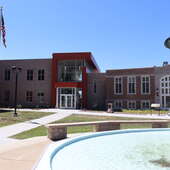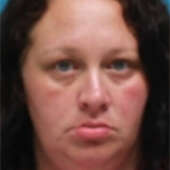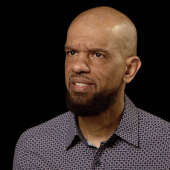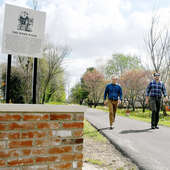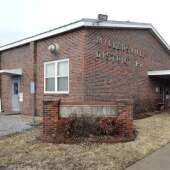B Magazine Column: Teaching in the age of masks

"Be sure to take your instrument home with you after school today. It might be awhile until we see each other again."
That was the announcement I gave to all of my classes on Friday, March 13, 2020. It was indeed our last day, and even after hopeful goals of returning to school were announced, 163 days would pass before school would once again be in session.
We have enjoyed over a month of school, and it is evident that everybody in the school community is doing their best to maintain this safe environment. To say that school has been normal, however, would be misleading.
When I see the crowds of students in the hallway during passing time with masks covering their face, it is still so surreal.
Our high school band cannot meet as a full band and maintain appropriate social distancing. We start each day split into five different rooms. They wear masks until everybody gets to their chair strategically placed six feet apart, then they unmask and rehearse.
To prepare for Friday night football game performances, we have them put their masks back on and go to the stadium where they are once again placed six feet apart before masks come off.
During cross country practice our runners are masked for announcements, warmups and stretches and only take them off during their workouts. Then they are put back on immediately afterward.
At the races, they are required to wear masks to the starting line and can take them off 2 minutes before the start of the race. These routines in my day are mirrored in other classes, activities and sports as we have all assimilated to the new norm.
When everybody returned for the fall, communication and interaction seemed to be at a different place than when we left it in March.
I am accustomed to the band students and cross country runners being notably interactive, but when we assembled for rehearsals and practices, it was eerily silent.
You would assume after finally being reunited there would be so many stories to share and an abundance of enthusiasm for being able to do what they love. Truth is, they were elated to be there, but the physical barriers put in place to protect them from the dreaded virus incidentally created chambers of isolation.
As the days rolled along, this would quickly change. They realized that sitting six feet away from their friend did not mean they could not exchange pleasantries. A piece of cloth covering their mouth and nose no longer meant they could not laugh about a hilarious TikTok. Though awkward at first, the physical obstacles that have repainted our image of school were no match for the joy of the human spirit.
It has been fascinating to observe how people communicate while having their mouths concealed. Words easily become jumbled and misunderstood.
Not only is there a physical barrier that reduces volume, but consonants and vowels also seem to get distorted.
Whether we realize it, when somebody is speaking to us we depend on looking at their mouth to extrapolate the subtleties our ear may not catch. For this reason, some teachers have found face shields to work better for their communication with their students while still maintaining personal protection. For speech pathologists, a face shield is an absolute must!

With faces covered, shifting the focus to the eyes, eyebrows and forehead has actually allowed me to be more in touch with gauging how my students and athletes are feeling.
While you may not be able to see a laugh or smile, you can see their eyes looking bright and cheerful and eyebrows relaxed and slightly raised.
You can determine if they are surprised, puzzled, tired, enthusiastic, upset, nervous, tired, angry, overwhelmed, proud or excited by looking at the top part of their face far more effectively than the words that actually come out of their mouth. This is analogous to how a person may develop heightened senses if they happen to lose one.
These students have been through so much over these past six months and teachers reading these cues have bolstered their resolve to help the students learn and feel safe.
School is back in session. Students are learning. But every day is far from ordinary when compared to any day before last March.
Each day is a new learning experience for teachers and students alike. The technology to continue this learning process has been established if we are required to go virtual, but for now each day is treated as an opportune gift to physically be together and learn.
Those vilified masks have been a source of inconvenience and frustration, yet have united and granted us an opportunity to connect at another level.
This pandemic has highlighted the tenacity in all of us in the school community, and we will emerge even stronger when life is back to normal.
Paul Fliege teaches instrumental music and coaches cross country and track for Jackson R-2 Schools. He is currently serving as president of the Missouri Bandmasters Association.

















